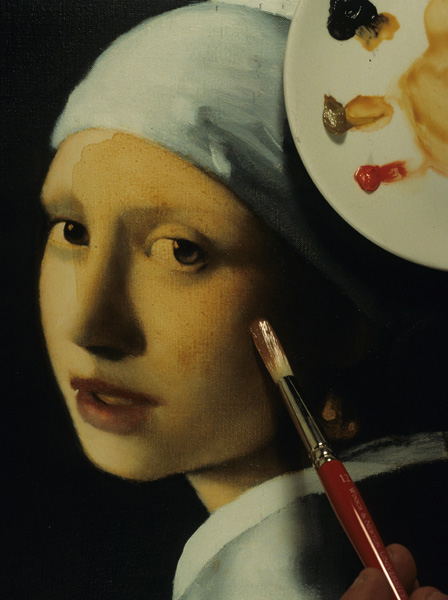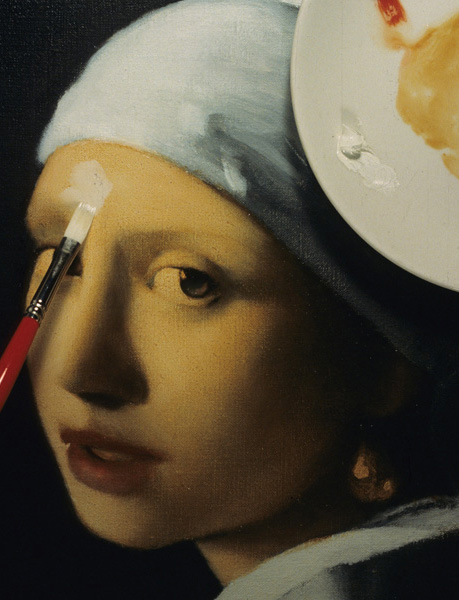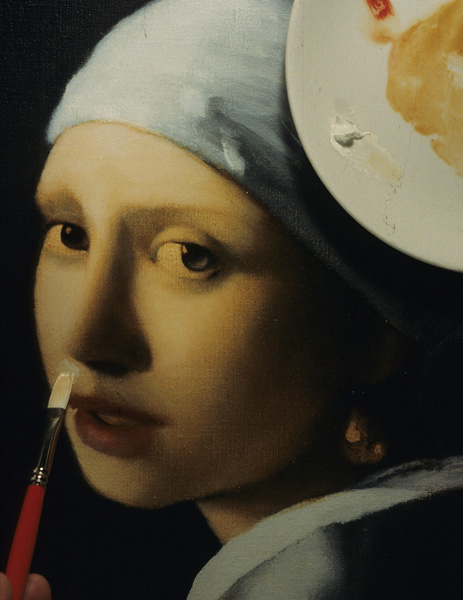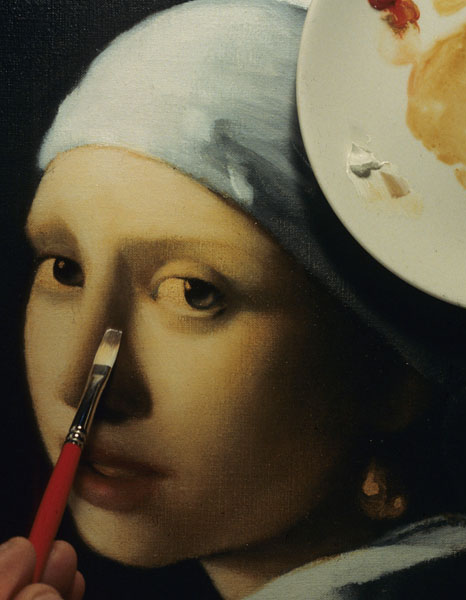
PAGE 5: Painting a Copy of Jan Vermeer's "Girl with a Pearl Earring"
Using Oil Glazing Technique and a Grisaille (Monochromatic Gray) Underpainting

A third glaze is now applied to the dried surface of the painting. In this case I felt that the color imparted to the face by the first two glazes was becoming too intense. So in this glaze I have neutralized the color a bit by adding a little bit of raw umber to the cadmium red medium and yellow ochre. There are numerous ways to neutralize a color. You can add some ivory black, or alternately you could use a brown, such as raw umber or burnt umber, or you could also mix a color with a bit of its complimentary color. In this case the slightly greenish-brown quality of raw umber would serve as a compliment to the red quality of this glaze, and works well to neutralize the color a bit, and make it look like a more natural flesh tone.


In this image, white has been blended into the forehead, cheeks, and the top of the lip. Keep in mind that the side of the face closest to the source of illumination is always the brightest. Hence, the cheek on the right will not be as bright as the one on the left. Remember that volume and three dimensional shape can never be expressed without changes in value. The human head catches light much in the same way as a sphere, so you must pay attention to how the play of light is handled over the form.

At this stage I am also working a small amount of a a grayed flesh tone into the glaze in the shaded portion of the nose, to bring out reflected light in this area. Notice that I have applied a similar application of white to the glaze at the bottom of the cheek, where the light reflecting from the earring and the while collar is illuminating this area. This reflected light effect is one of the most charming aspects of this portrait by Vermeer.